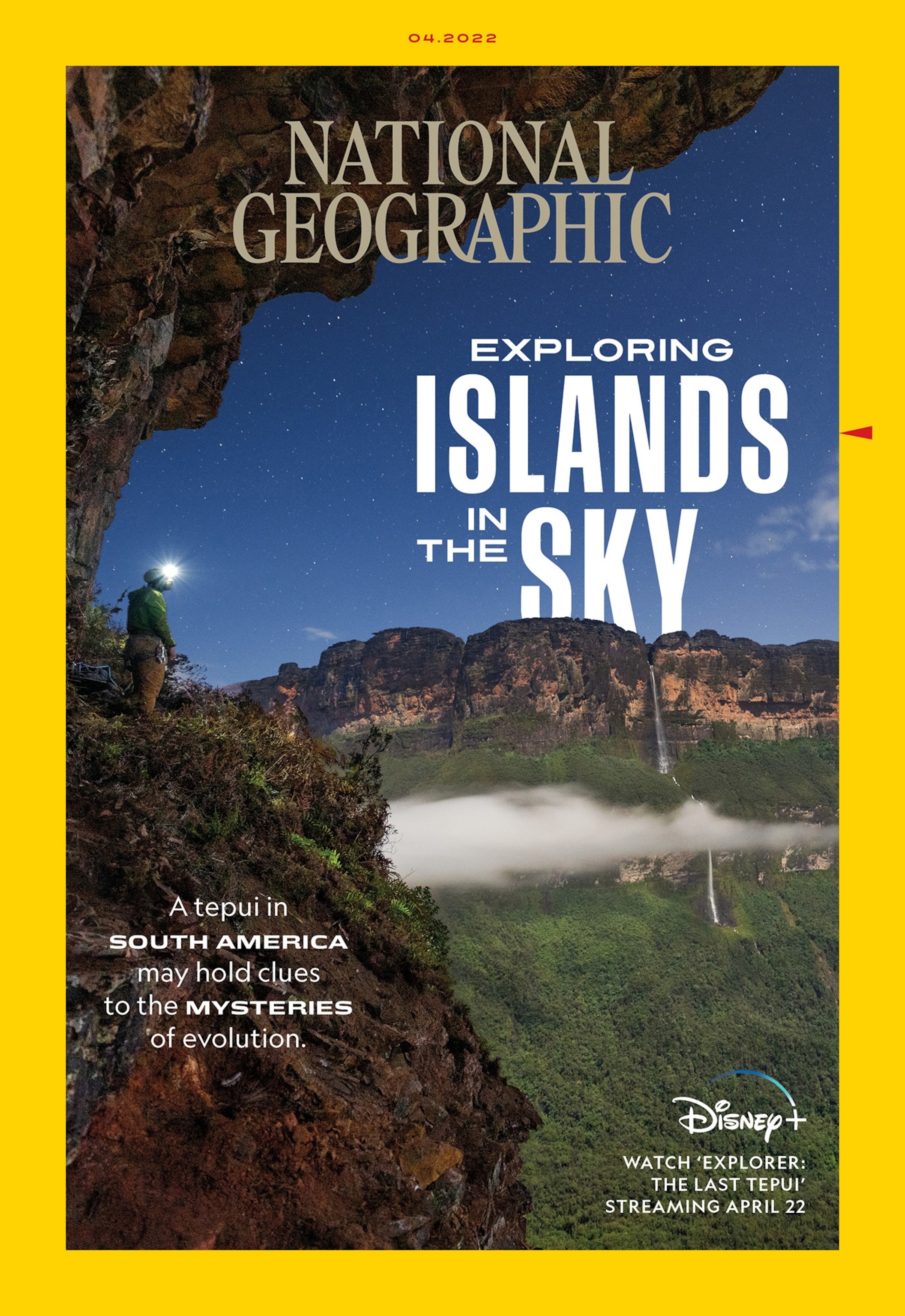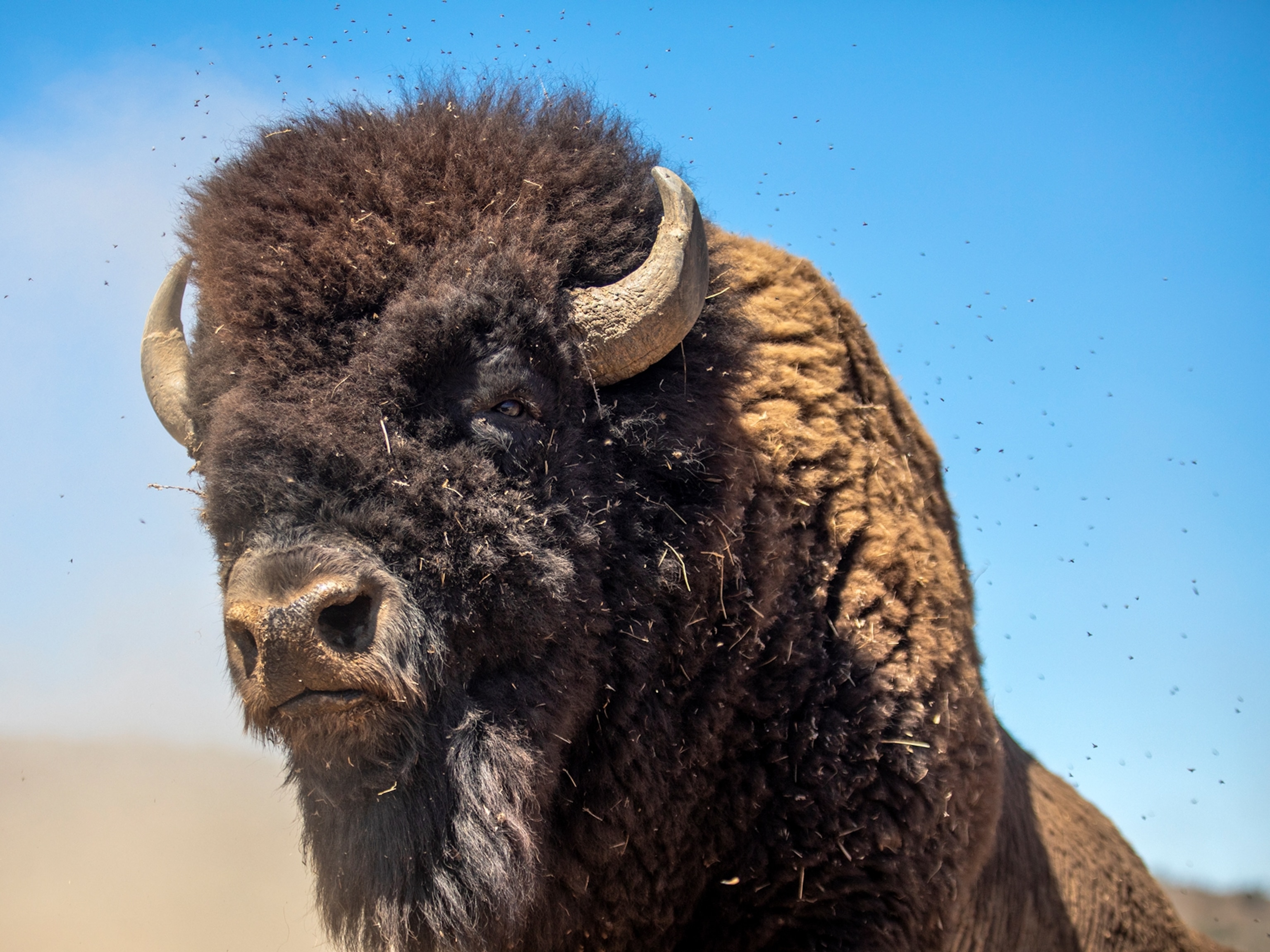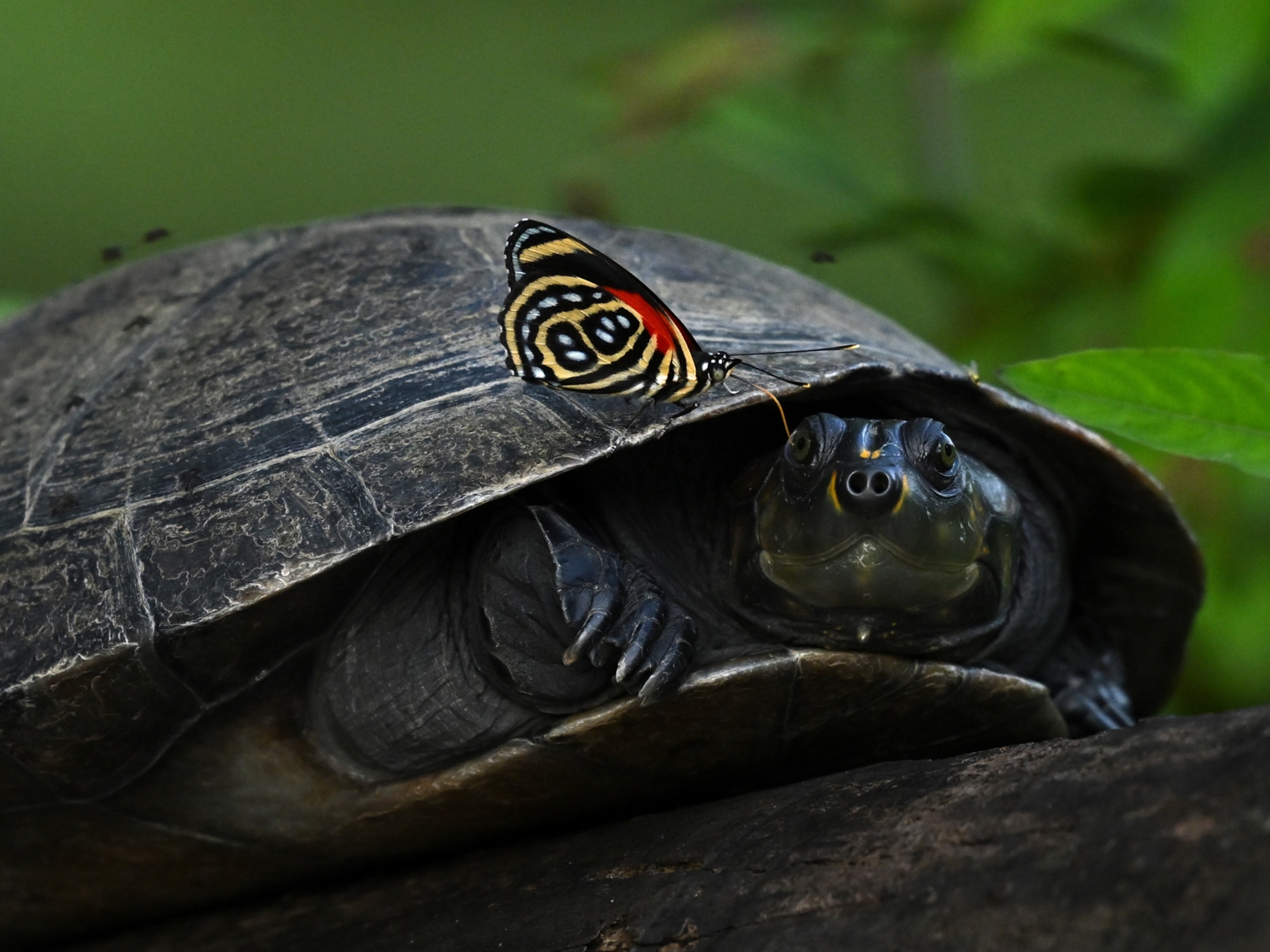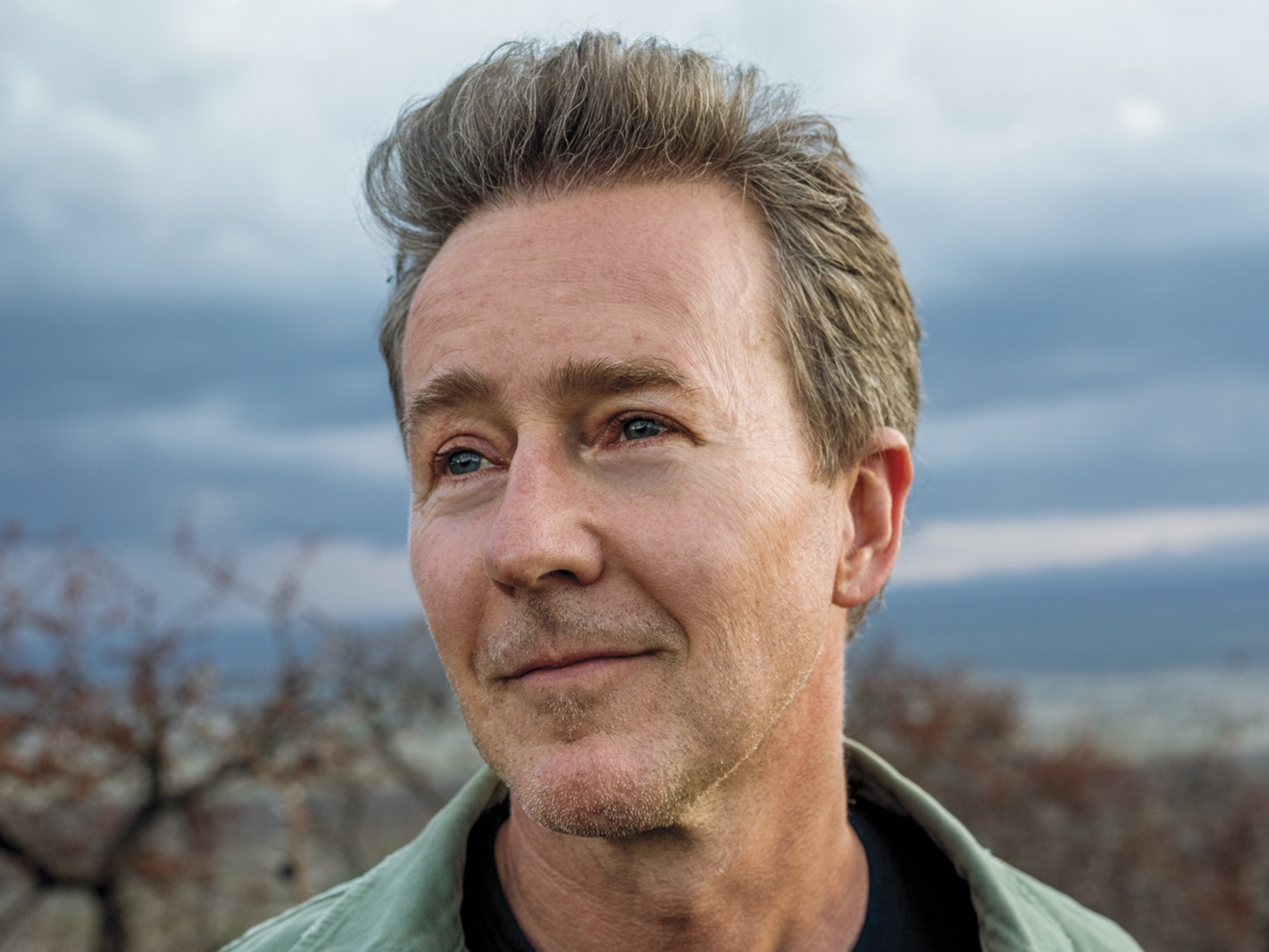He braved an arduous 700-foot vertical climb to capture this stunning image
On a mission to explore biodiversity in South America, Renan Ozturk hiked nearly 60 miles, then climbed to the top of a stone plateau, or tepui—where he took the shot on this month’s cover.
Before Renan Ozturk and his expedition crew could make the 700-foot vertical climb up Mount Weiassipu, they had to tackle the jungle—enduring a slog through mud, slime, and storms.
To the crew’s amusement, Ozturk face-planted in a river during the journey; his non-waterproof camera ended up fully submerged. Luckily, Ozturk was able to dry the equipment.
Following an arduous climb up the wall of the tabletop mountain known as a tepui—located in the area where Guyana, Brazil, and Venezuela converge—the photographer captured a stunning view of a waterfall in the rainforest and close-up shots of the biodiversity the crew had come to document. Also a filmmaker, Ozturk was well equipped for the challenge, having started his career as an expedition climber.
We recently spoke with Ozturk to learn more about his first National Geographic cover.

What’s the story behind the cover?
The feature article is the result of a passion project, several years in the making. Ozturk’s mission: explore the remote southeastern region of the Venezuelan rainforest and its tepuis, while also documenting the ecosystems and animal species unique to the region. Ozturk says that travel restrictions over the past few years and other challenges postponed the project.
He was joined in this mission by Mark Synnott, an American professional rock climber and author who describes these magical formations as towers rising out of the jungle, and Bruce Means, a conservation biologist who has dedicated his life to protecting the area.
Ozturk says his mountaineering and climbing knowledge didn’t really apply on this expedition, where the crew instead had to confront daily challenges from an unforgiving jungle. Throughout their journey to capture this image of the tepui that graces the cover, the team heavily relied on the expertise of Indigenous people to navigate the landscape and build their shelter.
“Getting to the base of the tepui to complete this vertical transect was some of the most difficult terrain that any of us had been in,” Ozturk says.
The journey included taking a bush plane, an all-day boat ride up a river, and walking about 60 miles through the jungle over a week and a half.
“The sky is not visible, and it creates a claustrophobic world under the canopy,” Ozturk says. “You are drenched to the bone while trying to move all this equipment and people safely through the jungle, through a lot of uncharted land.”
WHAT'S INSIDE THE ISSUE
• The weird, wondrous world of seahorses
• Can India clean up its holiest river? It will take a village.
• How Cuba’s popular songbird competitions are putting wild birds at risk
• Ethereal images capture the adventurous fishermen of Ghana's coast
What’s featured on the cover?
The soaring view with the sky, the summit of Mount Roraima, and a 3,000-foot waterfall, with one of the expedition team members in the frame, was not easy to capture. Ozturk shot the image from a hanging ledge covered in vegetation midway between the base and the summit of the tepui.
It was taken at a moment when the team had finally topped out their first ascent while looking for rare frog species on the tepui, which is considered a secluded biodiversity hot spot. Means had traveled to this area many times over the years, traversing the area to chart the so-called frog haven and better understand how life evolves on the isolated tepuis.
Over the years, Ozturk has mastered the dual role of being an expedition climber and a photographer, whose work has featured wildlife and epic landscapes.
“It’s always the balance between not slowing the adventure down when you’re shooting these things, especially when you have these different story elements,” Ozturk says. “You hope that over time you learn not to think of the shooting and the adventure as two separate things but be able to shoot seamlessly.”
The physical challenges of the environment took a toll on Ozturk’s body, as the crew hiked, climbed, trudged, and camped. While hanging from a harness aiming for the perfect shot, Ozturk says his legs went numb as he waited for hours for the sky to clear.
The weather created another technical glitch: Ozturk had to work to keep his camera dry as the lenses kept fogging up from the moisture. He constantly rotated the lenses.
Ultimately, he won out, with a cover that highlights the unique landscape of the tepuis and the Paikwa River Basin. Ozturk hopes shining a spotlight on Means’s work will lead to significant action for the area’s conservation.
“Most people just know this landscape through the Disney/Pixar movie Up—they don’t realize that it actually exists and it’s not free from threats,” Ozturk says. “I hope Bruce’s life’s work can lead towards protection. It’s those eco-minded people who dedicate their whole lives to places like this that we need to support.”
What’s next
Ozturk’s documentary The Sanctity of Space is expected to be in theaters in May. This documentary touches on climbing, the history of aerial photography, and exploration.
Another collaborative grand adventure with Synnott is also in the works for this summer, involving what Ozturk teases will be “one of the craziest sailing crossings on Earth.”




